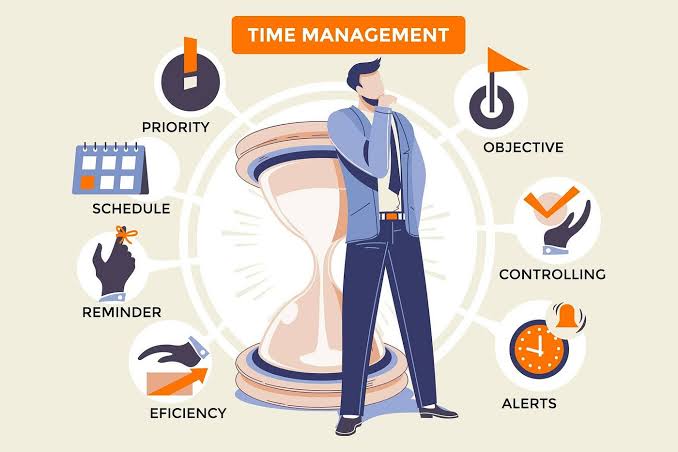In today’s fast-paced world, staying productive requires more than simply working harder—it requires working smarter. Prioritization is the cornerstone of effective productivity, as it ensures that time and energy are focused on tasks that yield the greatest impact. As of 2025, professionals, students, and entrepreneurs alike rely on prioritization techniques to manage busy schedules, meet deadlines, and maintain work-life balance. By mastering daily prioritization, individuals can achieve their goals efficiently without feeling overwhelmed or burned out.
The Importance of Prioritization in Daily Productivity
Prioritization is the process of identifying which tasks are most important and should be completed first. Without clear priorities, it is easy to get caught in cycles of busywork, multitasking, and reactive behavior. Effective prioritization ensures that high-value activities receive attention before less critical tasks, resulting in better productivity and reduced stress.
Key benefits of prioritization include:
- Focus on what matters most instead of wasting time on trivial tasks
- Efficient time usage by aligning efforts with goals and deadlines
- Reduced stress and decision fatigue through structured planning
- Improved work quality by giving essential tasks the attention they deserve
Popular Prioritization Techniques for Daily Productivity
1. The Eisenhower Matrix
The Eisenhower Matrix (also called the Urgent-Important Matrix) is a classic tool for identifying tasks based on urgency and importance.
- Important and Urgent: Do these tasks immediately
- Important but Not Urgent: Schedule them for later
- Urgent but Not Important: Delegate if possible
- Neither Urgent nor Important: Minimize or eliminate
Using this matrix daily prevents wasting time on low-value activities and helps focus on long-term goals.
2. The ABCDE Method
This technique, popularized by productivity expert Brian Tracy, involves ranking tasks by priority:
- A: Must do today or serious consequences follow
- B: Should do but less critical
- C: Nice to do but no real consequences if postponed
- D: Delegate to others
- E: Eliminate entirely if it adds no value
By labeling tasks each morning, individuals can attack their day with clarity and confidence.
3. The Pareto Principle (80/20 Rule)
The Pareto Principle emphasizes that 20% of activities produce 80% of results. By identifying and focusing on high-impact tasks, productivity improves significantly.
Daily application includes:
- Listing all tasks and identifying which ones bring the most value
- Prioritizing tasks that directly align with major goals
- Reducing or delegating low-impact tasks that consume unnecessary time
4. Time Blocking and Task Batching
Time blocking involves dedicating specific blocks of time to high-priority tasks without interruption. Task batching groups similar tasks together to minimize context switching and save mental energy.
Example:
- Morning: Deep work on high-priority tasks
- Midday: Respond to emails, calls, and meetings
- Afternoon: Planning, creative work, or administrative tasks
5. The Ivy Lee Method
This simple yet effective method helps structure priorities each day:
- At the end of each day, write down the six most important tasks for tomorrow.
- Rank them in order of importance.
- Start the next day by working on the most important task first and move down the list.
This approach keeps focus on what matters most without distraction.
Tools to Support Daily Prioritization
Modern technology enhances prioritization through digital tools and automation:
- Task Management Apps: Tools like Todoist, Trello, and Asana organize and rank tasks easily
- Digital Calendars: Google Calendar or Outlook for time blocking and scheduling
- Focus Apps: Apps like Notion or Motion help reduce distractions and keep priorities clear
- AI Productivity Tools: Intelligent assistants can suggest daily task orders based on deadlines and importance
Challenges in Daily Prioritization
Despite its benefits, prioritization can be challenging due to:
- Overcommitment: Taking on too many tasks reduces focus and energy
- Constant Interruptions: Emails, notifications, and meetings disrupt priority tasks
- Difficulty in Identifying Impact: Not all tasks are clearly measurable in terms of value
- Procrastination: Even with clear priorities, delaying high-impact tasks can affect productivity
Overcoming these challenges requires discipline, clear boundaries, and consistent reflection on what truly drives results.
Strategies for Maximizing Productivity
- Begin each day by reviewing and ranking priorities
- Focus on completing high-value tasks first before engaging in minor activities
- Combine time blocking with prioritization techniques to maintain focus
- Review progress at the end of the day and adjust for the next day
- Learn to say no or delegate tasks that do not align with core goals
Conclusion
Maximizing productivity daily depends on mastering the art of prioritization. By applying techniques like the Eisenhower Matrix, Pareto Principle, Ivy Lee Method, and time blocking, individuals can ensure that their energy is invested in tasks that truly matter. With consistency, discipline, and the use of modern productivity tools, prioritization transforms busy days into focused, high-performing routines that lead to long-term success and personal fulfillment.



